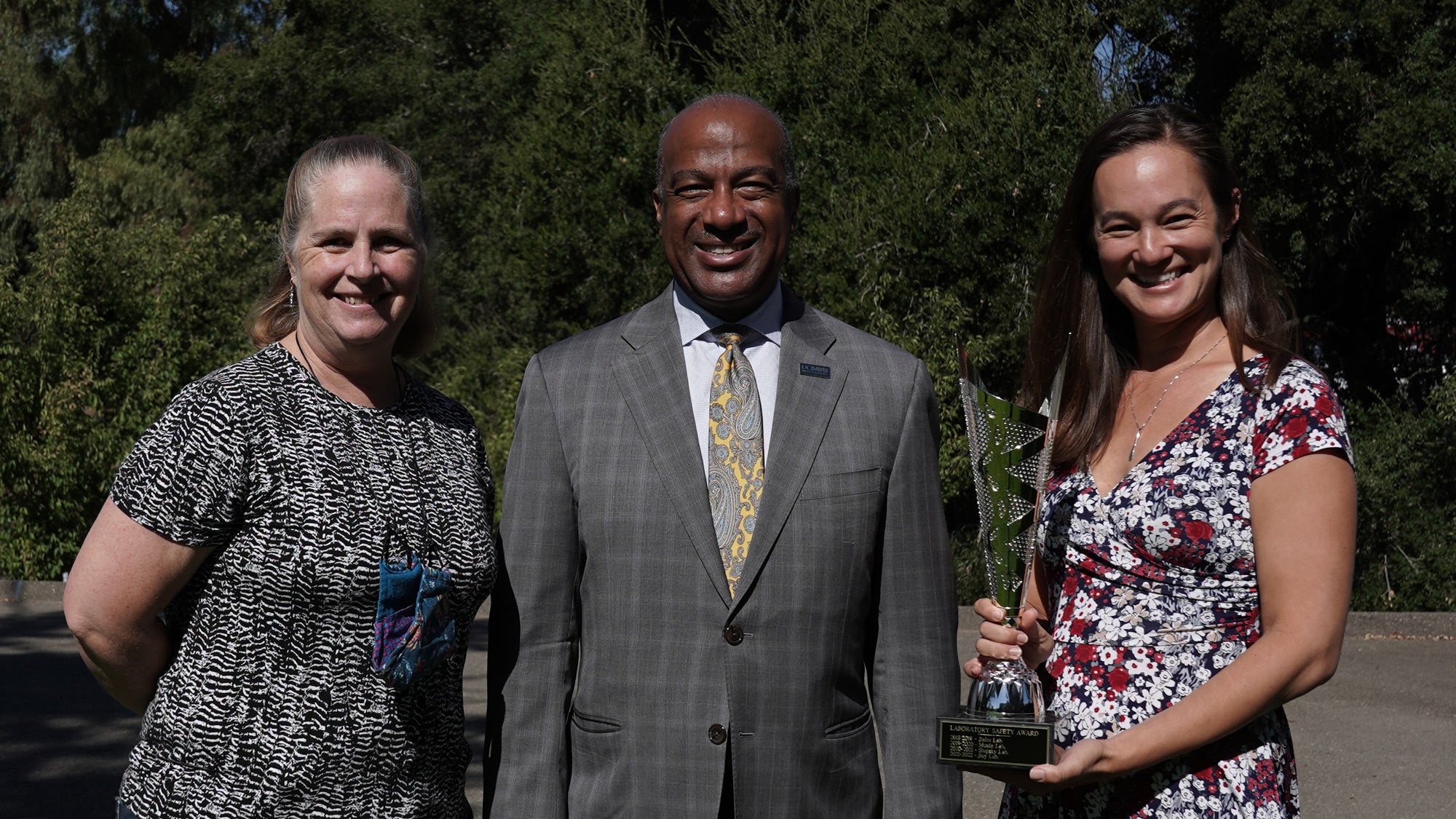
Rachael Bay Lab Wins Top Safety Award
When you’re experimenting with water, electricity and live animals, a lot can go wrong if you’re not careful. And no one knows more about that than Rachael Bay and her research team.
They study human-induced changes in the environment and evolutionary processes — things like climate change, coral bleaching and bird migration. And when you’re doing that kind of work — handling chloroform one day and blood samples the next — you want to make sure you’re not cutting corners.
Which is why Bay, assistant professor in the Department of Evolution and Ecology, prioritizes training above all else in her lab. Such effort has been rewarded with top prize in this year’s Lab Safety Awards program: $6,000 for the lab to spend.
The Bay Lab in the College of Biological Sciences was among six finalists for the top prize — one from each college and school with lab operations.

Rachael Bay, right, holding the lab safety trophy, pictured with Brenda Cameron, lab manager and departmental safety coordinator, and Chancellor Gary S. May at awards ceremony. (Grant Nejedlo/UC Davis)
The Bay Lab
Strict schedules ensure everyone is up to date on lab and fieldwork training, not only on the fundamentals but also the use of specialty chemicals and the administration of first aid.
The Bay Lab’s sheer number of rooms and research spaces can complicate safety efforts. Whether it’s in marine or tropical walk-in space, at the lab bench, a microscope or using the campus’s core research facilities, each new project starts with a safety review.
And, because lab bench space is tight, everyone must work together to clean up and keep their shared bench space tidy. By keeping clear documentation and committing to organization, the lab has managed to stay on the same page about what’s where and who’s who.
The lab also works in remote locations around the world, so research plans always include safety measures for fieldwork and the safe transport of samples and reagents.
Another factor: Graduate students whom the lab “adopts” from other departments when the students use the lab’s equipment for molecular work and DNA extractions. Coming from places like plant sciences a lot of them have not worked with harsh chemicals and all of a sudden are handling liquid nitrogen for the first time.
Brenda Cameron, lab manager, who has been working in the Department of Evolution and Ecology for the past 25 years, handles all the trainings for both new and seasoned researchers. She and Bay believe they owe their lab safety success to their “see something, say something” philosophy.
They have cultivated a lab culture that understands mistakes happen — and they learn from them rather than laying blame. This includes mistakes in lab protocols, administrative mistakes and even errors in safety. When issues arise, they are spoken about openly and treated as a learning opportunity, and even posted on a bulletin board to normalize transparency rather than shame.
